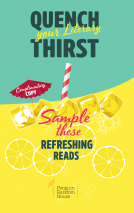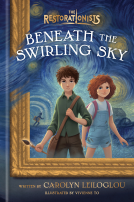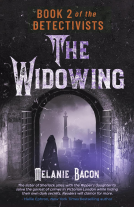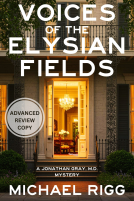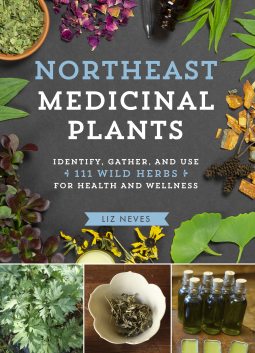
Northeast Medicinal Plants
Identify, Harvest, and Use 111 Wild Herbs for Health and Wellness
by Liz Neves
This title was previously available on NetGalley and is now archived.
Send NetGalley books directly to your Kindle or Kindle app
1
To read on a Kindle or Kindle app, please add kindle@netgalley.com as an approved email address to receive files in your Amazon account. Click here for step-by-step instructions.
2
Also find your Kindle email address within your Amazon account, and enter it here.
Pub Date Jun 02 2020 | Archive Date Jun 08 2020
Talking about this book? Use #NortheastMedicinalPlants #NetGalley. More hashtag tips!
Description
Wildcraft your way to wellness with this guide book to nature's medicinal offerings in the Northeast!
“Both a field guide and one of the best herbalism how-to books I’ve ever read ... a must for anyone interested in herbal medicine, foraging, and self-sufficiency.” —Leda Meredith, author of Northeast Foraging
In Northeast Medicinal Plants, Liz Neves is your trusted guide to finding, identifying, harvesting, and using over one hundred of the region’s most powerful wild plants. You’ll learn how to safely and ethically forage, and how to use wild plants in herbal medicines including teas, tinctures, and salves. Plant profiles include:
- Clear, color photographs
- Identification tips
- Medicinal uses and herbal preparations
- Harvesting suggestions
- Lists of what to forage for each season, making the guide useful year-round!
Thorough, comprehensive, and safe, this is a must-have for foragers, naturalists, and herbalists in Connecticut, Maine, Massachusetts, New Hampshire, New Jersey, New York, Pennsylvania, Rhode Island, and Vermont.
Available Editions
| EDITION | Other Format |
| ISBN | 9781604699135 |
| PRICE | $27.99 (USD) |
| PAGES | 432 |
Average rating from 13 members
Featured Reviews
 Media/Journalist 16509
Media/Journalist 16509
All of this series is wonderful, and this book is no different. I have purchased the version for my area (the Midwest) and have read the Southwest one as well. Each is written by a different author so they are written by herbalists/foragers who actually live in the area they're writing about. That said, the format is very similar in each one and even the plants tend to cross over quite a lot between the Midwest and Northeast. I also appreciate that this book covers quite a lot of the Canadian region too.
The start of the book gives good basic information about foraging, sustainability and all kinds of herbal information -- how to make remedies like oxymels and syrups and tinctures, how to know dosage, and much more. There is a slight mystical element to it, giving directions for making flower essences, for instance, and giving instructions on how to use an herb if you can't pick it. That's not to say this isn't useful or possible, but it may throw off some readers who are more of the empirical science data kind of folk. Those readers may also mind the lack of studies, data, and evidence behind the herbal medical profiles. The author says what herbs are good for without saying much about how we know it (again, that's not to say it's not true, and this is stuff that's well established in the herbal community). To them, I'd say that this book is quite long as it is and they can research that on their own. The plants and their uses are generally well established both through traditional knowledge and modern studies.
Each of the 111 herbs are profiled with at least one color photo (often many) and 2-3 pages of information on what parts to harvest, where to find them, what they are useful for, and a box with basic instructions on how to make teas, tinctures and sometimes something more with them. For the most part, these are good ID pictures but they are not the full ID portrait that you may need in some instances. I prefer foraging books that have photos or sketches of all parts of the plant and in different stages. Neves addresses this and points out that a plant like mugwort can look totally different in spring and late summer. It would be nice if the series gave the kind of botanical illustrations of the 1700's Elizabeth Blackwell or the USDA plant profiles, which show each part (root, stem, leaves, flowers, seeds) up close. This isn't a big deal -- just look up good ID info online if you need to if you're looking for a plant you're not sure about, just something to be aware of. The photos are excellent and will provide good assistance in recognizing and identifying the plants, though.
I have a few other small wishes about the series, but they are tiny. It is truly an excellent book. The series is probably the best I know of for this sort of information, especially as it focuses on the plants in your area. As I said, I bought the Midwest one for my own use after reviewing that one. I'd consider it a must for anyone who wants to get serious foraging wild medicinal plants, and it will be helpful for beginners and seasoned foragers/herbalists alike.
I read a temporary digital ARC of this book for the purpose of review.
 Rosemary S, Librarian
Rosemary S, Librarian
Many of us are trying to find more natural ways to deal with our aches, pains, cuts, fever and cold. Neves presents an all inclusive volume of plants that can help us heal, naturally. From showing how to concoct, teas, syrups, tinctures and balms to where to find and harvest the plants needed. She also provides valuable information on what plants NOT to use. I can’t wait until springtime so I can start my own natural “pharmacy”
 Deborah W, Reviewer
Deborah W, Reviewer
"Northeast Medicinal Plants" is a guide to foraging wild medicinal plants in the Northeast (Connecticut, Maine, Massachusetts, New Hampshire, New Jersey, New York, Pennsylvania, Rhode Island, and Vermont.). The author started by explaining how to gather the different parts of a plant for medicinal use (leaves and flowers, bark, roots, etc.), how to store them, and how to make a infusion, decoction, tincture, oil infusion, poultice, syrup, etc. She included some information about plant identification, including pictures to help illustrate the different terms.
The main part of the book was an alphabetically organized list of 111 plants found in the region. For each listing, we're given the common names, the Latin name, the parts of the plant used, a description of how to identify the plant, when and how to gather the plant, the medicinal uses of the different parts the plant, how to ensure a future harvest, any safety cautions, and details about how to use the plant (the proportions used in a tincture, etc.). For each plant, there was a picture of the plant (often including its natural habitat) and usually a picture or two of distinguishing details, like the flower or a close-up of the leaf. Overall, this is an excellent resource for anyone interested in gathering and using medicinal plants from this area. It's very informative and provided practical information.
I really loved this book. It has detailed sections on individual herbs, what they are used for, precautions, and how you can use them. There is also a section devoted to what plant parts are called. But I really appreciated the chapter on how to make your own balms, tinctures, lozenges, vinegars, compresses, and more. I have actually looked for a long time for a book that had what this book provides.
Thank you Netgalley for providing me a free copy of this book in exchange for an honest review.
 Sharon T, Reviewer
Sharon T, Reviewer
Northeast Medicinal Plants: Identify, Harvest, and Use 111 Wild Herbs for Health and Wellness by Liz Neves is currently scheduled for release on May 26 2020. It is a guide to finding, identifying, harvesting, and using 111 of the region’s most powerful wild plants. Readers will learn how to safely and ethically forage, and how to use wild plants in herbal medicines including teas, tinctures, and salves. Plant profiles include clear, color photographs, identification tips, medicinal uses and herbal preparations, and harvesting suggestions. Lists of what to forage for each season makes the guide useful year-round. Thorough, comprehensive, and safe, this is a must-have for foragers, naturalists, and herbalists in Connecticut, Maine, Massachusetts, New Hampshire, New Jersey, New York, Pennsylvania, Rhode Island, and Vermont.
Northeast Medicinal Plants is a well organized and detailed guide. I like that the book takes the time to explain some of the most important, and sometimes ignored, factors of identifying and gathering plants, like making sure you have permission before harvesting from private property. The explanations of the use, preparation, and the aspects of the plants that aid in identification. Even though I have made my own tinctures and grown my own ingredients in the past I found the information to be laid out in an accessible manner that lends itself to being referred back to as desired. I liked that the basics never read in a condescending tone, which sometimes happens when someone tries to talk about things that are second nature to them but might be new to others. I also liked that the importance of understand the nature of each plant is stressed, as some as very poisonous, some have very useful roots but problematic leaves or stems, and so on. The details about the individual plants and their use to be well done and comprehensive, and I learned quite a bit about some of my favorite, and least favorite, plants that can be found in my backyard and surrounding areas. I also really enjoyed that Neves included and comprehensive list of references and resources, as dedicated readers and wildcraft enthusiast can further expand their understanding and possibly lend a hand with conservation. I also found the photography to be very well done and worth enjoying in its own right.
Northeast Medicinal Plants is a valuable resource for anyone that is interested in the wild herbs of the area, and how to use them. I think it would be a good addition to public libraries and for the personal libraries of those that are interested in the subject matter.
 Librarian 431790
Librarian 431790
A great book about medicinal plants. A lot of ideas and recipes that I will surely try.
It's well written and well researched, highly recommended.
Many thanks to the publisher and Netgalley for this ARC, all opinions are mine.
 Nancy C, Librarian
Nancy C, Librarian
The content of this book is outstanding. Photos are beautiful. Plants and the group's they are in are explained in detail. How they help, how some can make you sick if used wrong. The instructions and recipes seem very concise. Definitely worth having in your collection for anyone interested in herbal care, flora and fauna.
I loved the format of the plant entries. The approach to alternative medicinal systems, especially those outside of western herbalism, was really respectful and inclusive.
This is not your typical identification guide and harvesting guide.
First things first, It goes into how to be ethical and mindful in the treatment of mother Earth. This is something I think is super important to talk about before one delves into nature and harvests anything. To take anything from the Earth, you need to be respectful, responsible, and mindful of your actions. You also need to ask and give back.
It also brings up safety and helps you identify poisonous plants so you understand risks. Some of these plants look alike, so you have to keep your eyes open. I like that they give you pictures with detailed descriptions of the poisonous plants so you know what to watch out for.
It even has a section on how to make your own medicine from the plants that you harvest. It details recipes for tinctures, syrups, vinegars, elixirs, essences, balms, lotions, creams, and salves.
Another great part about this book is the section that gives you detailed charts on when to best harvest these plants by season. There are also pictures of how these plants can look different as they grow, which can help you to better identify them when you go to harvest.
The actual section where it gets into each of the plants is very detailed (such as plant name, parts used, how to identify, “where, when and how to wild craft”, medicinal uses, precautions, future harvests, and herbal preparations) with numerous full color photos for each. It covers 111 wild herbs and is responsible in covering only the ones that aren’t currently at risk for being over harvested or endangered in the wild like American ginseng, slippery elm, and wild ginger (just to name a few).
Would I recommend this book to others?
Most definitely! In fact, I intend to buy this book for myself when it is published and released to the public because I was SO blown away by how much helpful detail is included and how organized the information is within the pages.
Would I buy this book for myself?
Yes! I’ve been looking for a guide like this for Northeastern plants that I could use to identify and harvest in the wild and this one hits the nail on the head.
Thanks to Netgalley, publisher and author for an ARC in exchange for an honest review.
 Erin D, Librarian
Erin D, Librarian
This was wonderful! This would be a great encyclopedia to keep on hand for those interested in the topic.
 Beth C, Librarian
Beth C, Librarian
A useful book with plenty of information about medicinal plants. WE have many fans of both gardening and complementary/natural medicine in our library system so I was happy to buy copies.
As someone who has always gone for natural remedies to ailments I really loved this book. The detailed information on herbs is phenomenal. My favorite part however is the recipes for balms, tinctures, lozenges and so much more. Highly highly recommend this book!
Thank you to the Publisher and Netgalley for the advanced e-reader copy. All opinions expressed are my own.







